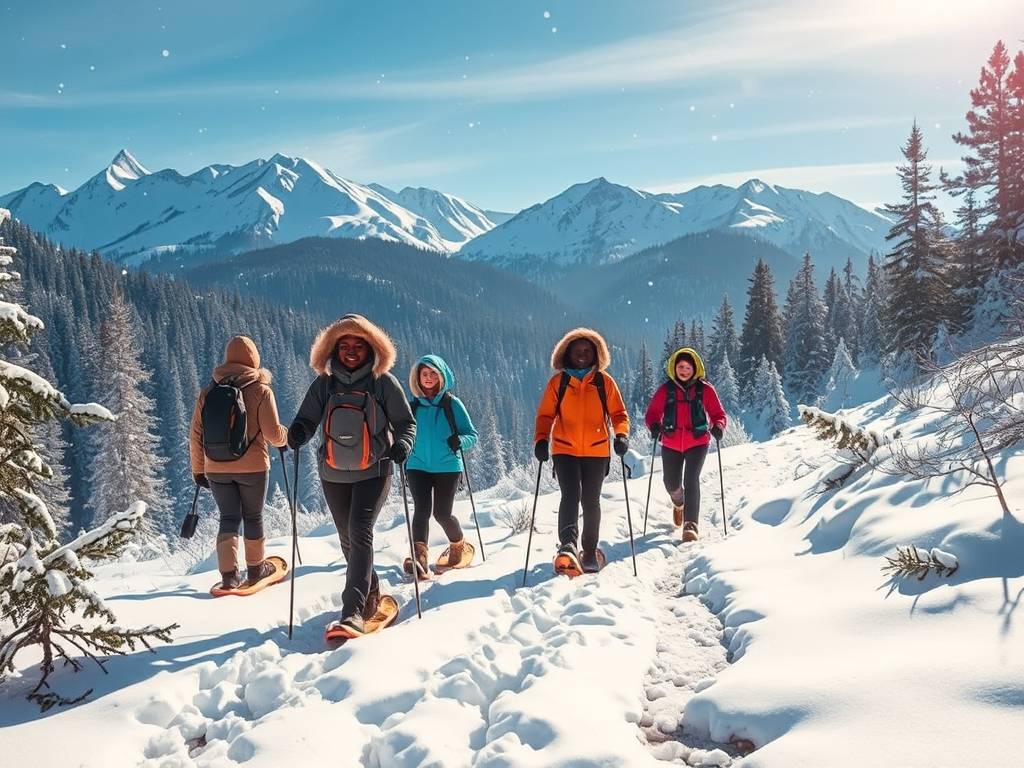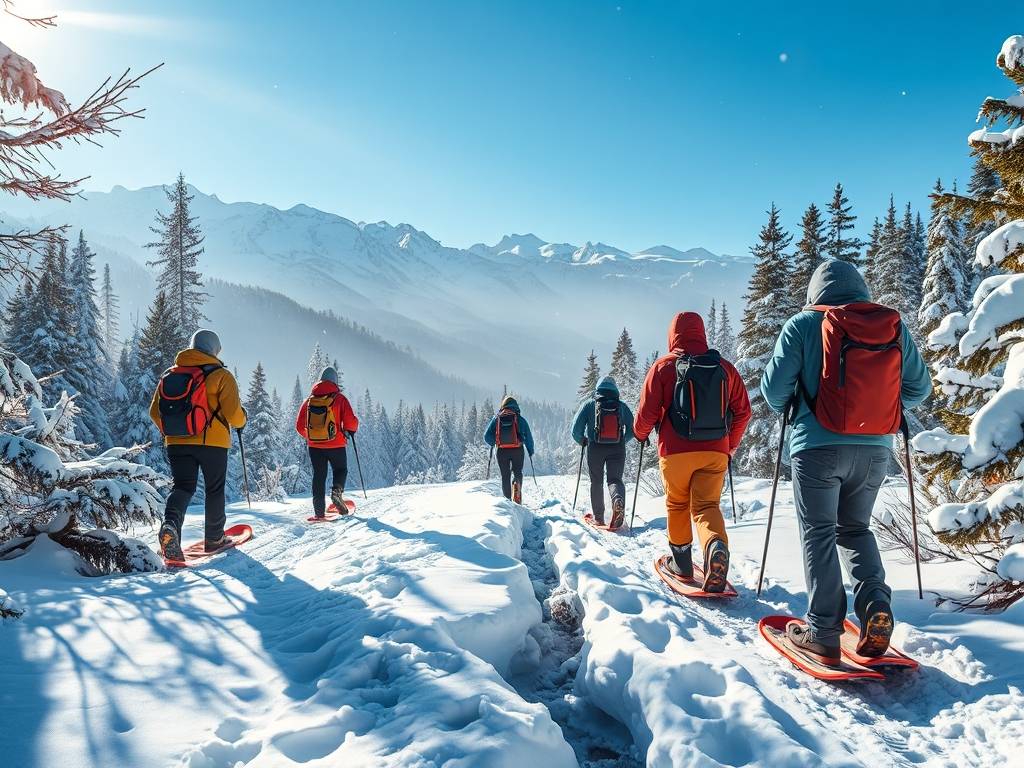USA Travel
US Travel: Snowshoeing in Oregon’s Backcountry
Winter’s Hidden Path: Snowshoeing Through Oregon’s Untamed Backcountry
There’s a special kind of quiet that descends upon Oregon’s wilderness in the winter. The summer crowds have long vanished, the familiar trails are buried under a thick, pristine blanket of snow, and the landscape transforms into a silent, magical world. For those seeking an escape from the curated resort experience, an adventure into Oregon’s backcountry on snowshoes is the answer. This isn't just a walk in a snowy park; it's a journey into the heart of winter, a chance to witness nature’s most serene season in its purest form.
If you’ve ever felt intimidated by the idea of winter backcountry travel, fearing it requires the technical prowess of a mountaineer, let this be your reassurance: snowshoeing is one of the most accessible and beginner-friendly winter adventures you can find. It’s essentially hiking, but with ingenious platforms strapped to your boots that keep you floating on top of the snow. The learning curve is wonderfully shallow, and the rewards are immense.

Why Choose Oregon for Your Snowshoeing Adventure?
Oregon boasts an incredibly diverse winter landscape. From the towering volcanic peaks of the Cascade Range to the ancient, silent forests of the Wallowas, the state offers a stunning backdrop for your journey. The snowpack, often referred to as "Cascade Concrete" for its moisture-laden quality, is actually ideal for snowshoeing as it provides a stable platform. You’ll find a vast network of Oregon snowshoe trails suitable for all levels, from gentle, family-friendly loops to challenging, multi-day backcountry traverses.
The benefits extend beyond the scenery. Winter hiking in Oregon is a fantastic full-body workout, a peaceful mental reset, and an opportunity to see wildlife tracks and winter-adapted flora you'd miss in any other season. It’s about embracing the cold and discovering the unique beauty that only exists when the temperature drops.
Gearing Up: Your Essential Snowshoeing Checklist
Before you dash into the woods, having the right gear is crucial for safety and comfort. You don’t need the most expensive equipment, but you do need the right pieces.
- Snowshoes and Poles: Modern snowshoes are lightweight and easy to use. Rentals are widely available at outdoor shops near popular trailheads, which is a great way to try different models. The size you need depends on your weight and the snow conditions—heavier loads and fluffier snow require larger shoes. Don’t forget adjustable trekking poles with large snow baskets; they are indispensable for balance, testing snow depth, and saving your knees on inclines.
- The Layering System: This is the golden rule of backcountry winter travel. Avoid cotton at all costs, as it retains moisture and will make you cold. Instead, dress in layers:
- Base Layer: Moisture-wicking fabric like merino wool or synthetic materials to keep you dry.
- Insulating Layer: A fleece or puffy jacket to trap heat.
- Shell Layer: A waterproof and windproof jacket and pants to protect you from the elements.
- Footwear and Extremities: Wear insulated, waterproof boots. Your regular hiking boots might not be enough. Pack extra wool socks, a warm hat, gloves, and a neck gaiter or balaclava.
- The Ten Essentials (Winter Edition): Never venture into the Oregon backcountry without these safety items. Your pack should always include: a detailed map and compass (and the knowledge to use them), a headlamp with extra batteries, a first-aid kit, a fire starter, repair kit and knife, extra food and water, and sun protection (sunglasses and high-SPF sunscreen are a must—snow is highly reflective). For winter, add an emergency bivvy or shelter, a portable shovel, and a hand warmer.
Planning Your Route: From Beginner Paths to Expert Terrain
One of the most common questions is, "Where should I go?" Oregon is brimming with possibilities.
For your first time, stick to established, well-marked snowshoe trails for beginners. Areas like Crater Lake National Park offer ranger-led snowshoe walks, which are a fantastic and informative way to start. The trails around the rim provide breathtaking views of the deep blue lake set against a white expanse—a truly iconic Pacific Northwest winter adventure. Similarly, the Mt. Hood National Forest has numerous sno-parks (requiring a permit for your vehicle) with trails perfect for novices, such as the White River West Sno-Park area, where you can trek across snowy plains with stunning views of the mountain.

For those with more experience, the world opens up. Consider a guided tour or a multi-day trip into deeper wilderness areas. The Three Sisters Wilderness or the Elkhorn Mountains offer more challenging terrain for experienced snowshoers seeking solitude. This is where skills in backcountry navigation and avalanche safety become non-negotiable.
Safety First: Navigating the Winter Wilderness with Confidence
This is the most critical section. The beauty of the backcountry comes with inherent risks, and being prepared is what allows you to enjoy it fully.
- Check the Weather and Avalanche Forecast: Always consult the National Weather Service and the Northwest Avalanche Center (NWAC) before you leave. Conditions can change rapidly in the mountains. Understanding the avalanche risk assessment for snowshoers is vital. Even if you are sticking to forested, low-angle terrain, you need to be aware of the conditions above you.
- Tell Someone Your Plan: Always leave a detailed trip plan with a friend or family member. Include your intended route, trailhead, and expected return time.
- Travel with a Partner: There is safety in numbers. Never go snowshoeing in Oregon's wilderness alone, especially as a beginner.
- Stay Hydrated and Fed: It’s easy to forget to drink water in the cold, but you are working hard and dehydrating quickly. Use an insulated water bottle or hydration bladder to prevent freezing. Pack high-energy snacks like nuts, chocolate, and energy bars.
- Know Your Limits: Turn around before you get tired. The journey back is just as long. Pay attention to your body and the fading light.
The Intangible Rewards: What You Truly Find Out There
Once you are geared up, informed, and on the trail, the real magic begins. The rhythmic crunch of your snowshoes becomes a meditative sound. You’ll notice the small things: the intricate pattern of a snowflake on your sleeve, the delicate tracks of a snowshoe hare, the way ice crystals cling to the bark of a towering fir tree. You might break out of a dense forest into a sun-drenched meadow, with views of snow-capped peaks stretching to the horizon, and feel a profound sense of peace and accomplishment.
This is more than just a sport; it's a way to reconnect with the natural world on its own terms. It’s about earning the warmth of a hot drink from your thermos while sitting on a log, surrounded by a silence so deep you can hear your own heartbeat. It’s about discovering that the Oregon wilderness isn't closed for the winter—it's simply resting, waiting for those willing to step gently into its quiet, white wonderland.
So, embrace the cold, do your preparation, and take that first step off the beaten path. A world of serene beauty and unforgettable adventure awaits in Oregon’s winter backcountry.
相关文章
- US Travel: Historical Fort Tours in Massachusetts
- US Travel: Kayaking in Washington’s Puget Sound
- US Travel: Blues Clubs in Chicago, Illinois
- US Travel: Bagels in Boston, Massachusetts
- US Travel: US Road Trip Accommodation Booking Tips
- US Travel: Hiking the Appalachian Trail in Vermont
- US Travel: White-Water Rafting in Colorado’s Arkansas River
- US Travel: Bird-Watching in Florida’s Everglades
- US Travel: Rock Climbing in Utah’s Moab Desert
- US Travel: Camping in California’s Yosemite National Park
发表评论
评论列表
- 这篇文章还没有收到评论,赶紧来抢沙发吧~


